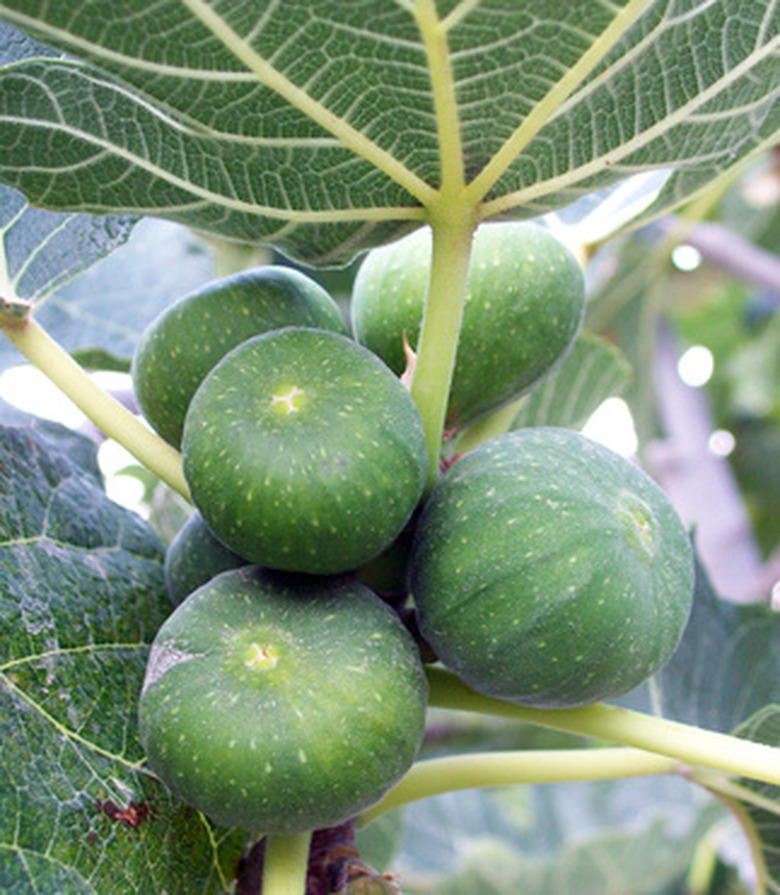How To Take Care Of A Fig Tree In Ontario
Things Needed
- Large growing container
- Peat-based potting soil
- Composted manure
- Organic compost
- Nitrogen fertilizer
- Pruning shears
The fig tree is a deciduous, fruit-bearing plant that can reach heights of 3 to 15 meters (10 to 50 feet), depending upon space and growing conditions. Fig trees that are completely dormant can survive temperature dips as low as -11 degrees C (12 degrees F), while those still growing are damaged at -1 degrees C (30 degrees F). Since winter temperatures in Ontario are not suitable for the survival of the tree, they should be grown in containers. Fig trees do quite well when planted this way, although it does limit their size.
Step 1
Fill a large growing container three-fourths of the way with a combination of 1 part peat-based potting soil, 1 part composted manure and 1 part organic compost. The chosen container must have several drainage holes in the bottom to prevent over-watering.
Step 2
Plant the fig tree at the same level it was previously growing. Add water until the soil feels very moist. Place the growing container in a location that receives full sun the majority of the day.
- The fig tree is a deciduous, fruit-bearing plant that can reach heights of 3 to 15 meters (10 to 50 feet), depending upon space and growing conditions.
- Fig trees do quite well when planted this way, although it does limit their size.
Step 3
Water the fig tree often during warm weather, anytime the top of the soil feels dry to the touch. When the weather begins to cool, reduce watering frequency and add just enough to keep the soil lightly moist.
Step 4
Feed four times each year with 113 g (4 oz.) of nitrogen fertilizer. The last feeding should be done in late summer, before the tree begins to prepare for dormancy.
Step 5
Clip all the leaves away from developing figs except the ones closest to the fruit. Pull off fruits that are not large enough to ripen.
- Water the fig tree often during warm weather, anytime the top of the soil feels dry to the touch.
- When the weather begins to cool, reduce watering frequency and add just enough to keep the soil lightly moist.
Step 6
Clip off dead or damaged branches as often as necessary. Do a more thorough pruning to control size and shape in very late winter, just before new growth starts to appear.
Step 7
Remove any fruits that haven't ripened in fall. Place the tree in a dark location and water lightly once every two weeks.
Step 8
Remove the root ball of the fig tree from the growing container and trim the roots every two to three years. This will prevent the tree from becoming root bound and increase the amount of fruit that is produced.
Tip
Move the fig tree indoors in early fall, before temperatures drop to -1 degrees C (30 degrees F). Harvest figs as soon as they begin to feel soft.
